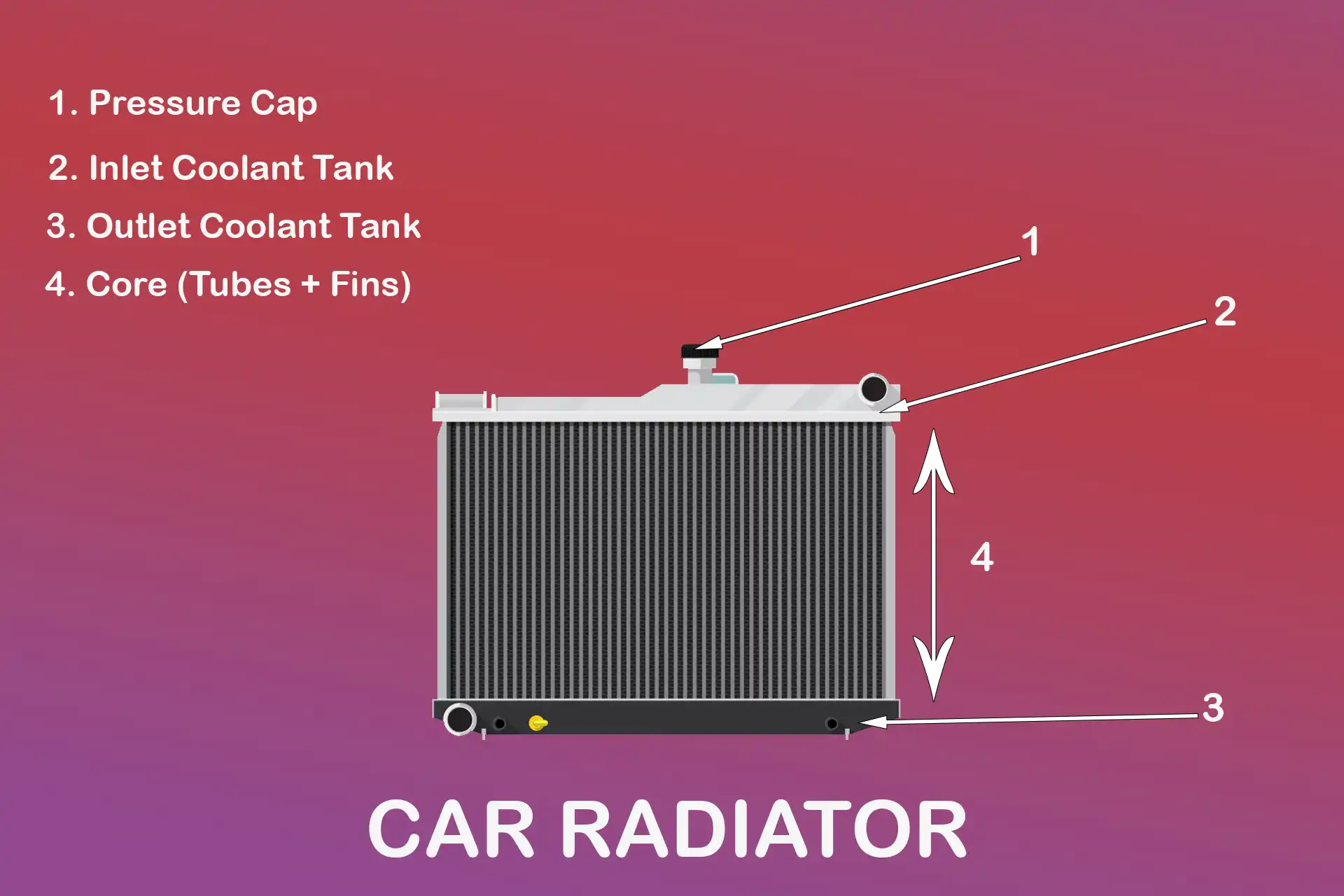Car engines produce excessive amount of heat that if not dissipated properly can damage the engines. When fuel and air mixture is burnt inside the internal combustion engine, it produces heat and thrust to pistons that are connected with the crank shaft which drive car wheels. The combustion process is continually producing heat and engine components get warmer. A normal gasoline fuel car engine maximum temperature can go up to 1400-degree Fahrenheit. Whereas an ideal temperature of a car engine should be 90 to 105 degrees Celsius. You can monitor car temperature from an analog gauge on your car instrument panel or dashboard. Ideally when car engine temperature rise up to 220 degrees Celsius, an electronic sensor and thermostat operates the engine cooling system to maintain the optimal temperature. Car engine cooling system is a set of multiple components including car radiator.
The radiator is an important part of the car engine cooling system; it has been used since ancient times and is effective for reducing the coolant temperature to an optimal level. This article will help you understand what a car Radiator is and how it aids in maintaining engine temperature.
What is a Radiator in Car?
A radiator in the car is a component that absorbs excessive heat from the coolant when it passes through it. A car radiator is complex architecture of tanks, inlet and outlet pipes, core with multiple tubes, fins, and radiator cap.
In ancient days, radiators were manufactured with brass and copper because of their high heat exchange properties, and those were readily available. Brass and copper were later replaced with light materials such as aluminum to reduce the overall weight of cars and make them cost-effective. Manufacturers of cars in Europe and the United States started reducing the overall weight of the cars to make them more efficient on fossil fuels. Moreover, aluminum was cheaper for copper and brass so it also reduces the production cost.
General car radiator is a boxy or rectangular structure with a coolant inlet tank, a coolant outlet tank, a pressure cap, and core. The core is composed of coolant tubes and fins. While the pressure cap is installed on the coolant inlet tank.
Function of Radiator in A Car
As it is the most important part of car engine cooling system. Radiator along with radiator fan is complete assembly that removes heat from the coolant as it passes through the core tubes.
High temperature Coolant enters in to the upper tank of the via pipe where it flows downward through various radiator tubes. As coolant moves downward excessive heat is absorbed by those tubes. Fins act as heat sink material that are fabricated in between radiator tubes. The radiator fan act as a suction pump that pull the air from holes of radiator fins and dissipate the heat in to the environment. The temperature of the coolant is reduced to 90 degrees Celsius to 105 degrees Celsius which is an optimal temperature for car engine. Low temperature coolant accumulates in to the lower radiator tank where is further sent to the engine block to absorb heat via water pump. This cooling cycle continues until you switch off the engine.

